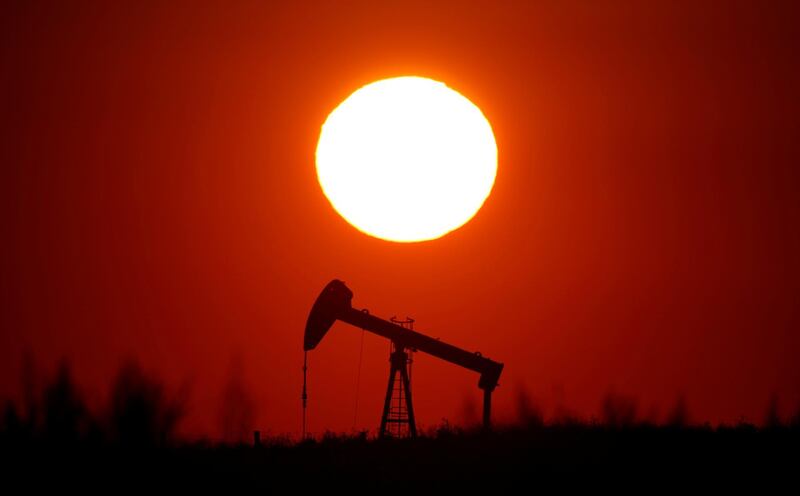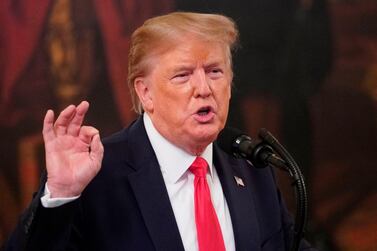Oil markets were shocked by a black swan event swooping down on Saudi Arabia's production facilities earlier this month, after an attack on the kingdom's oil installations wiped five per cent off the global daily crude oil output.
Oil prices initially jumped by 20 per cent, its biggest percentage rise since Saddam Hussein’s 1990 invasion of Kuwait before surrendering gains. However, there is a chance prices will head towards $100 (Dh367.3) a barrel if geopolitical tensions rise over Iran’s alleged involvement in the attacks.
This may galvanise the US shale industry to increase production even more with President Donald Trump already authorising the release of US emergency reserves to cover any shortfalls.
However, Saudi Arabia's energy minister, Prince Abdulaziz bin Salman assured markets oil production will be fully back online by the end of September suggesting there’s no need for other Opec members to open their taps, or the US to release its emergency reserves. So, how else are oil prices being affected?
Zero sum trade disputes
Up until this point, crude oil prices were clearly a victim of the zero sum US-China trade disputes but this event complicates the equation.
So, what is zero sum? Basically, a zero sum approach is part of game theory. It means that only one side can win while the other side loses. It is a theoretical approach that has been put into real-world practice by the US and China in their trade war.
The issue so far, is that both sides are losing. For each tariff the US imposes on Chinese imports, China levies its own duties on US goods, making them more expensive and unaffordable given the rapidly declining economic conditions.
If this continues, the zero sum game becomes the negative sum game. Why has this happened? Surely as the world’s largest, most developed and efficient market economy, the US should be able to dictate its trade terms.
The reality is that the theory does not factor in animal spirits and the effects of uncertainty on the outcome of the game.
Uncertainty has risen so sharply in the last year that investors are tentative in their approach to risk and this damages the global economy. According to the International Monetary Fund’s World Trade Uncertainty Index, as of the fourth quarter of 2018, uncertainty rose tenfold because of successive rounds of punitive tariffs.
The greatest jumps in trade uncertainty are in the Americas and Asia. Uncertainty prevails to a lesser extent in Europe, the Middle East and Africa. Economic misgivings reduce output and risk sentiment, giving the IMF reason to believe the global economy will slow down by 0.75 per cent in 2019.
This explains, to a degree why oil prices have been pressured downwards. Investors simply do not feel on safe ground in these unpredictable times.
China tariff on US crude oil
The 5 per cent duty on US oil exports to China adds to the uncertainty in the oil markets. China is in ninth place as a customer of US oil, but the highly publicised tariff decision wafts more clouds of uncertainty which may affect demand from the US’s biggest oil importer — Canada.
As mentioned earlier, uncertainty is mostly pressuring the Americas and comes at a time when US Shale is seeking a greater global market share.
Demand and supply challenges
If the IMF’s forecast of a 0.8 per cent drop off in global economic output next year comes true, it would damage expectations and increase demand and supply side challenges for US shale oil.
Already, the industry is seeing bankruptcies, defaults and lower returns due to pressured oil prices.
Appetite for risk
It’s possible the heartiest risk appetite comes from leaders of the world’s largest economies, who escalate tensions with tariffs with little thought of the consequences on the trading and financial markets.
But the high stakes trade negotiations have already damaged investor sentiment, hiked uncertainty and affected factory output and manufacturing growth.
If the manufacturing sector in the US continues to slow, it will have a knock-on effect on the demand for oil used in factory processes and transportation.
Big oil
It may just be a matter of time until interests from the big oil companies in the US start pressuring President Trump to make a deal with China and reverse the damage to their industry.
President Trump talks about energy world dominance in which the US floods the market with cheap oil. For this to work, global demand has to be robust.
But as long as high levels of uncertainty prevail over trade disputes, demand is being reduced — along with revenues and profits.
Oil outlook
On balance, there may be three factors to clarify the direction of oil prices in the fourth quarter, firstly the possibility of a US strike or other escalated action on Iran. This could trigger more supply shortage fears and add significant geopolitical risk premium to prices.
Secondly, whether Opec intervenes in the wake of the attacks on Saudi Arabia. If the group decides to reduce supply cuts and release more stocks onto the markets when it meets in December, this could add resistance to any rise in oil price benchmarks.
Lastly, a speedy US-China trade deal. This could soothe global trading uncertainty, improve global growth expectations and support oil prices.
Hussein Sayed is the chief market strategist at FXTM








